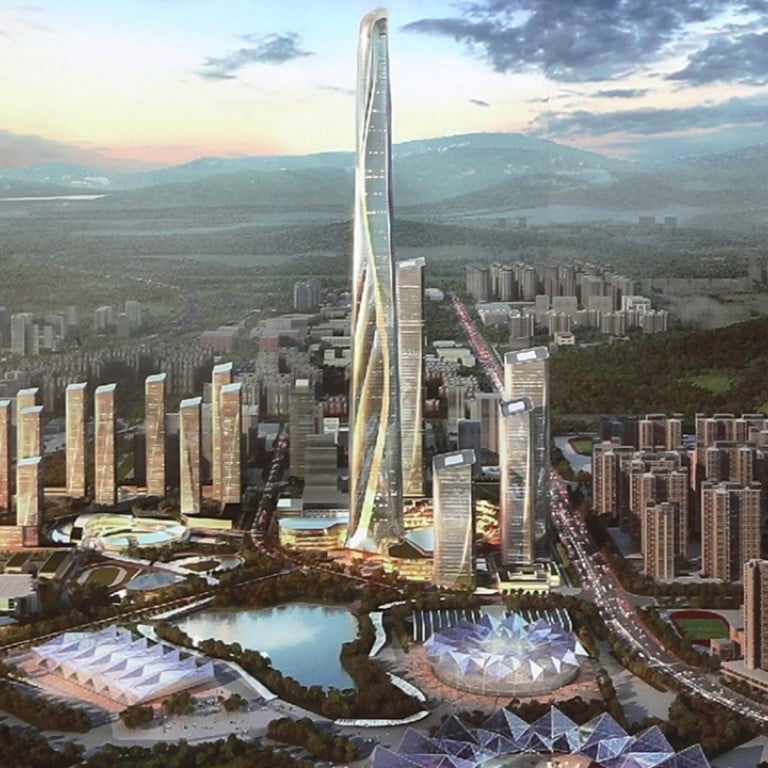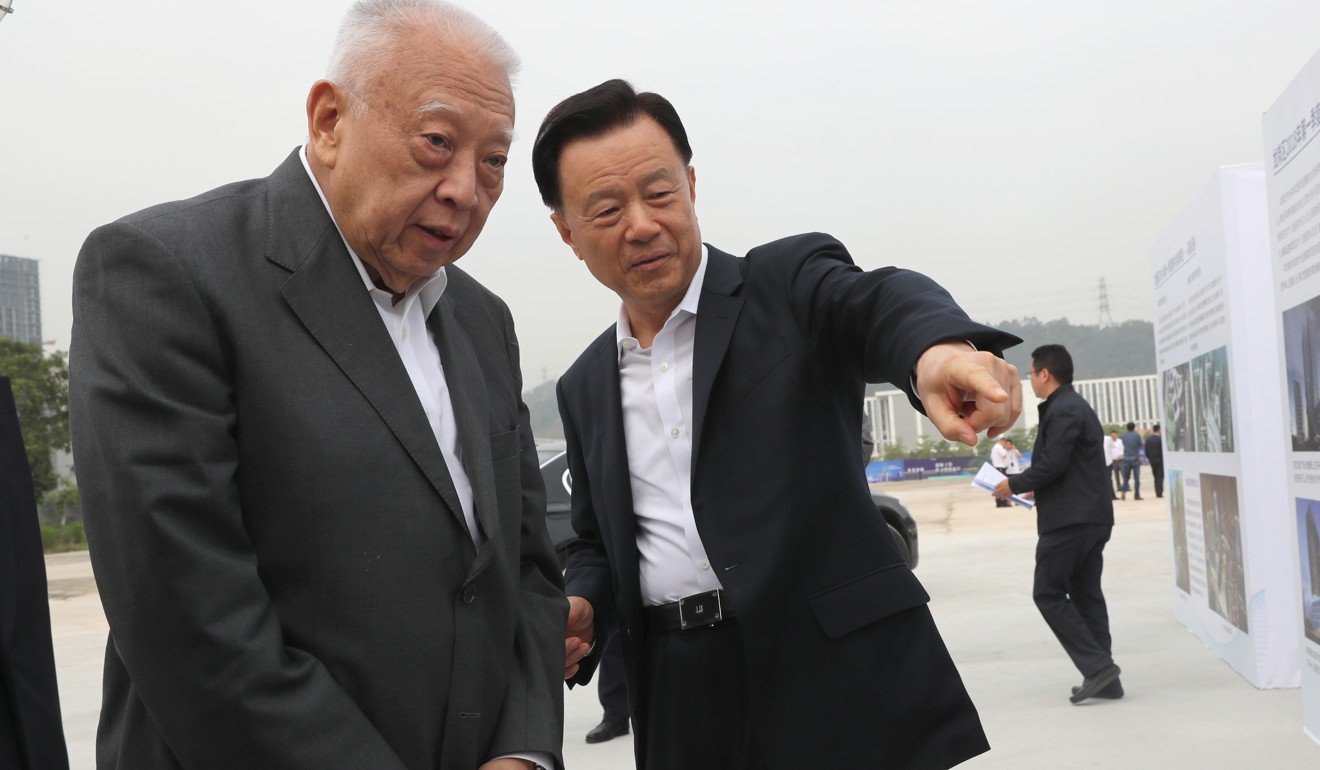
Kicking off work on ‘China’s future tallest building’, Hong Kong tycoon Hui Wing-mau lauds bay area plan
Property mogul says city’s young entrepreneurs could benefit from the business environment just across the border in Shenzhen
Hong Kong property tycoon Hui Wing-mau on Monday urged the city’s young people and entrepreneurs to seize opportunities afforded by the “Greater Bay Area”, as he kicked off work on China’s next top skyscraper in Shenzhen.
In an exclusive interview, the Shimao Group chairman also said he hoped a state leader would be tasked with promoting Beijing’s bay area project, aimed at socially and economically integrating Hong Kong, Macau and nine Guangdong cities. He said that would show the central government values the plan.
Hui said Hong Kong and Guangdong province could benefit from working more closely to drive their economies forward.
Get young people involved to boost Greater Bay Area integration
“Shenzhen and Hong Kong’s development was based on the mainland’s reform and opening up [from the late 1970s], when the mainland’s economy took off and created a lot of opportunities for Hong Kong. The Greater Bay Area is the second [wave of] opportunities and we must seize them,” he said.
But he said the plan required initiative from local businesspeople. He added: “It must not be the government doing all the work. Shenzhen has been trying to attract businesses and capital, and Hong Kong entrepreneurs need to find and develop good projects here ... [Hong Kong] has the money and skills, and mainland China has a huge market. It should be best for us to cooperate.”

Hui, a newly elected standing committee member of China’s top advisory body, the Chinese People’s Political Consultative Conference (CPPCC), was speaking after overseeing the foundation ceremony of his latest project in Shenzhen, alongside CPPCC vice-chairman Tung Chee-hwa, Shenzhen party secretary Wang Weizhong and mayor Chen Rugui.
The commercial-residential complex, called the Shenzhen-Hong Kong International Centre, comprises buildings such as an office tower planned to be about 700 metres (2,300 feet) tall, a young people’s entrepreneurial and start-up centre, a museum, a hotel, a performing arts hub and an international school. Its expected cost is 40 to 50 billion yuan (US$6 billion to US$8 billion).
When completed, in 2024 at the earliest, its tower is expected to be China’s tallest building, surpassing the Shanghai Tower.
The 830-metre Burj Khalifa in Dubai is currently the world’s tallest skyscraper, ahead of the Shanghai Tower. Hong Kong’s tallest building, the 484-metre International Commerce Centre, ranks 11th in the world.
Hui, whose net worth financial magazine Forbes estimates at US$8.2 billion, noted that Guangdong cities like Shenzhen have increasing numbers of “start-up centres”, or relatively cheap office space for young people. He said Hong Kong’s young people could benefit from such facilities, including the one to be included in his new project.

“There are centres for people to start their business in [many districts] of Shenzhen. If Hong Kong’s young people have good ideas and products, there are cheap office units ... dormitories, funds and low-interest loans for them to apply for,” he said.
At a meeting in Beijing earlier this month, Shenzhen’s former party secretary Wang Rong, who chairs the provincial CPPCC in Guangdong, proposed that a state leader – that is, a very senior member of the government – should guide the Greater Bay Area project, as the province’s cooperation with Hong Kong and Macau had in the past been more talk than action. Hui said he agreed.
Some Hong Kong business leaders believe a vice-premier will be tasked with the project, but Hui said that it would be appropriate for any state leader to take the job.
“The Greater Bay Area project is a national strategy endorsed in the [Communist Party’s] 19th congress last year ... so Beijing is attaching much importance to the project,” he said.
“It might not be a vice-premier, but it must be a state leader pushing it.”
The Post understands that Shimao has contacted the Hong Kong Palace Museum, which will showcase Chinese national treasures from 2022, with a view to exhibiting artefacts at the Shenzhen site. The group is also negotiating with Harrow International School about opening its fifth Asian branch at the complex, after Hong Kong, Beijing, Shanghai and Bangkok.

